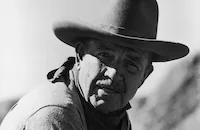Murder on the Blackboard

Brief Synopsis
Cast & Crew
George Archainbaud
Edna May Oliver
Bruce Cabot
Gertrude Michael
Tully Marshall
Frederik Vogeding
Film Details
Technical Specs

Synopsis
After schoolteacher and amateur sleuth Hildegarde Withers discovers the corpse of music teacher Louise Halloran in the school cloak room, she notifies her friend and collaborator, Inspector Oscar Piper. By the time Oscar arrives, however, the body has disappeared. While Oscar questions Hildegarde's sanity, Donahue, Oscar's dim-witted assistant, explores noises in the basement and is knocked unconscious. Afraid of the dark, Hildegarde avoids the basement and sneaks into Louise's classroom, where she finds a bottle of liquor and a series of musical notes written on the blackboard. Confused as to how the killer could have escaped, Hildegarde and Oscar investigate the industrial arts room, where Addison Stevens, once an admirer of Louise, teaches. After Hildegarde makes note of an empty can of benzine, the fire alarm on the emergency exit goes off. Unable to identify the figure that is fleeing from the scene, Oscar and Hildegarde return to the basement, where Louise's burnt corpse is finally located. When Otto Schweitzer, the school's alcoholic janitor, who had threatened Louise with blackmail shortly before her murder, drunkenly exits the basement, he is arrested by Oscar. Not convinced of Otto's guilt, however, Hildegarde visits Jane Davis, Louise's roommate and Stevens' fiancée, who confesses that she and Louise had bought a winning lottery ticket together. Hildegarde also learns about Louise's missing love letters, which she eventually traces to MacFarland, the school's womanizing principal. Although MacFarland confesses to having had an affair with Louise, he insists that he lost interest in her after she dumped him for Stevens. As suspects accumulate, a forensics expert arrives with news that Louise had been dying of pernicious anemia. Oscar and Hildegarde then return to the basement, where, in the dark, someone throws a hatchet at the terrified schoolteacher. After they learn that Otto has escaped from prison, they are informed by Max, a pathologist, that Louise's anemia could have been caused by slow poisoning with benzine mixed in alcohol. At this point, Hildegarde convinces Oscar to announce in the newspapers that Donahue has recovered his memory and is able to identify his attacker. Hildegarde and Oscar plant themselves near Donahue's hospital bed and catch Stevens slipping poison into his water glass. Trapped, Stevens confesses that he killed Louise because she jilted him after marrying him in secret. Hildegarde then deciphers Louise's musical clue, which translates into the beginning letters of Stevens' first name.

Director
George Archainbaud
Cast

Edna May Oliver

Bruce Cabot
Gertrude Michael

Tully Marshall
Frederik Vogeding

Regis Toomey
Jackie Searle
Barbara Fritchie
Gustav Von Seyffertitz
Tommy Bupp
Crew
Tommy Atkins
Pandro S. Berman
Willard Booth
John L. Cass
Al D'agostino
Willis Goldbeck
Kenneth Macgowan
Archie F. Marshek
Nick Musuraca
Walter Plunkett
Van Nest Polglase
Frank Redman
Ollie Sigurdson
Max Steiner

Film Details
Technical Specs

Articles
Murder on the Blackboard
By Richard Harland Smith

Murder on the Blackboard
Quotes
I got to admit, you can take it.- Oscar Piper
Well, don't forget, when necessary I can dish it out, too.- Hildegarde Withers
I wish you'd let me forget it.- Oscar Piper
I oughta be a detective in the movies.- Oscar Piper
You could do all the acting, and the author could solve the crime.- Hildegarde Withers
Trivia
Notes
Stuart Palmer's novel was first published in serial form in Mystery. Murder on the Blackboard was the second film in the Hildegarde Withers-Oscar Piper series. James Gleason, Edna May Oliver, director Archainbaud and writer Goldbeck also collaborated on the first film in the series, The Penguin Pool Murder (see listing below). For additional information on the series, consult the Series Index.














